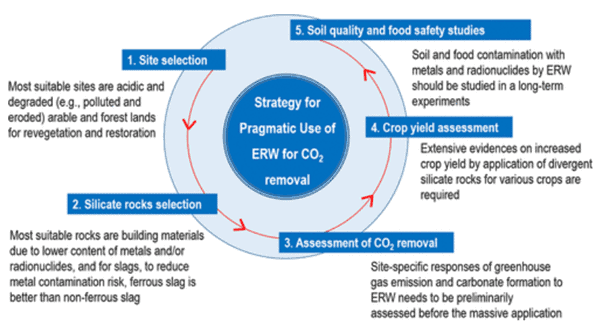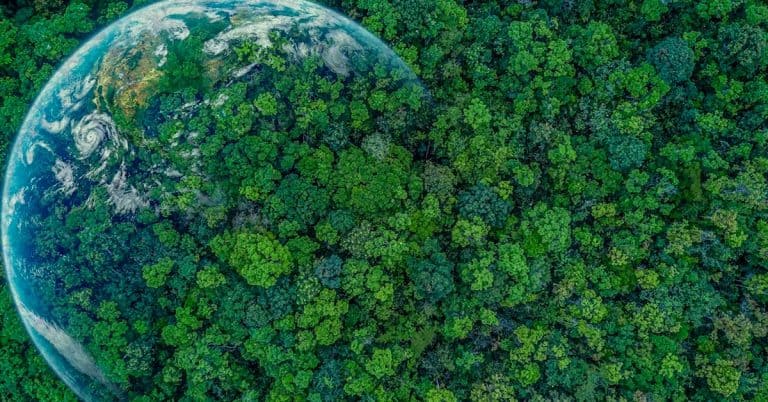As we continue to face the reality of climate change, we are also confronted with its devastating impacts on our environment and ecosystems. The need for carbon sequestration and climate mitigation strategies has never been more urgent. Enhanced Rock Weathering (ERW) is one such solution, which involves the accelerated natural process of dissolving silicate minerals to capture carbon dioxide. However, as with any climate intervention strategy, ERW too has potential risks and benefits. Learn more about the potential impacts of ERW on biodiversity and ecosystem health and understand what investors should keep in mind when investing in companies working on this technology.
What is Enhanced Rock Weathering (ERW) and what are its benefits?
Enhanced Rock Weathering (ERW) is a helpful technology that provides a promising solution in the fight against climate change by removing carbon dioxide from the atmosphere and storing it safely in soil.
In summary, this technology allows for the accelerated dissolution of silicate rocks and minerals, which are rich in nutrients that are essential for plant growth. This process needs CO2 to happen and thus, ERW constitutes a viable solution to solve the problem of high concentrations of this gas in the atmosphere.
Normally, the crushed material used in ERW is applied to soil destined for agricultural use. And because of that, there are various beneficial impacts of Enhanced Rock Weathering on the overall ecosystem of said soil.
Firstly, ERW can have significant impacts on soil health and nutrient cycling, leading to changes in plant communities and thereby affecting biodiversity.
Secondly, one of the key benefits of ERW is the increase in soil pH, which can improve soil fertility and nutrient availability for plants. This can increase plant productivity and diversity, leading to the formation of more complex ecosystems.
Furthermore, Enhanced Rock Weathering can also lead to the release of essential plant nutrients, such as phosphorus, potassium, and magnesium, which are trapped in soil minerals. This release can further support plant growth and biodiversity.
All this contributes to a better agricultural activity, with improved soil fertility and crop yields. However, there are some points that need to be considered when implementing ERW and the impacts it has on the ecosystem health.
Possible impacts of Enhanced Rock Weathering on the ecossystem
One of the primary concerns is that, depending on the type of material used on the ERW technique, there can be leaching of metals from rocks, which can lead to toxic contamination in soils.
For example, the dissolution of asbestos-containing rocks can release harmful fibers into the air, causing respiratory harm to animals and humans.
Additionally, Enhanced Rock Weathering can also increase the concentrations of minerals such as aluminum and manganese, which can be toxic to plants and animals.
On the article Environmental Risks in Atmospheric CO2 Removal Using Enhanced Rock Weathering Are Overlooked, Woo-Jung Choi and other researchers cite these risks, mentioning that silicate rocks and slags from industrial wastes may contain higher levels of potentially toxic elements (PTEs) and radionuclides that can be harmful to the ecosystem.
Furthermore, in some regions, ERW can alter the natural soil chemistry and microbe communities, leading to changes in soil organic matter.
Woo-Jung Choi and his colleagues also mention this, stressing that acidic and degraded arable and forest lands are most appropriate for applying ERW to achieve revegetation and restoration of the land and CO2 removal. They also propose the cautions selection of the the raw material used in the ERW technique.

A stepwise approach for pragmatic use of enhanced rock weathering (ERW) in soils for CO2 removal (Source: CHOI et al, 2021)
However, despite the potential risks, ERW can also have a significant impact on ecosystem health. ERW can help reduce atmospheric carbon dioxide concentrations, leading to a reduction in ocean acidification and the associated negative impacts on marine life.
Enhanced Rock Weathering can also help combat soil degradation, which can have severe consequences such as reduced food security and increased soil erosion.
Furthermore, ERW can support the growth of forests, which can have a range of benefits such as watershed protection, biodiversity conservation, and carbon storage. As such, with proper care, like the selection of appropriate raw materials, like glauconite, it can be a powerful tool to mitigate climate change and improve agriculture.
ERW is a powerful tool to mitigate climate change, but there’s need to invest in research to develop better ways to implement it
In conclusion, Enhanced Rock Weathering has the potential to be a significant tool in the fight against climate change with positive impacts on biodiversity and ecosystem health, such as soil health and nutrient cycling.
However, it is also necessary to consider some risks that are the result of bad planning of the implementing of the technology, such as metal leaching and toxic contamination. Therefore, it is essential to support companies that are investing in researching the risks and benefits of ERW.
With the right investment, good planning and use of good raw materials, like glauconite, Enhanced Rock Weathering can prove to be a valuable tool in mitigating climate change while ensuring ecosystem health and biodiversity conservation.


